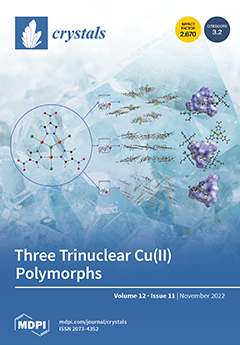Cephalosporin enzymatic hydrolysis technology is a green technology for recovering 7-amino-3-deacetoxycephalosporanic acid (7-ADCA) from cephalosporin mother liquor. Solubility is critical for the production and purification of 7-ADCA. In this paper, the solubility of 7-ADCA and phenylglycine was measured. Solubility-temperature correlation model and solubility-pH
[...] Read more.
Cephalosporin enzymatic hydrolysis technology is a green technology for recovering 7-amino-3-deacetoxycephalosporanic acid (7-ADCA) from cephalosporin mother liquor. Solubility is critical for the production and purification of 7-ADCA. In this paper, the solubility of 7-ADCA and phenylglycine was measured. Solubility-temperature correlation model and solubility-pH correlation model were investigated, and Akaike information criterion (AIC) analysis was performed. The kinetic parameters of the enzymatic hydrolysis reaction of cephalexin, cefradine, and cefadroxil were determined, and the reaction rates under different substrate concentrations were measured, and the Lineweaver–Burk double-reciprocal equation was used to draw a graph. The Michaelis constants
Km/(mg/mL) were 73.98, 583.84, 38.66,
Vmax/(mg/mL·min) 4.20, 16.00, 1.96, respectively. The experimental results show that amphoteric compounds and buffers can prompt the reaction, low concentration of methanol promotes the reaction, while high concentration of methanol inhibits the reaction, and ethanol, isopropanol, tetrahydrofuran (THF), dimethyl sulfoxide (DMSO), ethylene glycol (EG), 1,4-dioxane all have different degrees of inhibition on the reaction speed. Finally, based on thermodynamic and kinetic studies, a process technology for the preparation of 7-ADCA by hydrolysis catalyzed of cephalexin was developed. It was confirmed that the proposed process route of preferential removal of phenylglycine by elution and/or cooling crystallization was reasonable and effective. The 7-ADCA crystal products obtained by crystallization were characterized by PXRD, thermal analysis, infrared, electron microscope, and high-performance liquid chromatography (HPLC).
Full article





